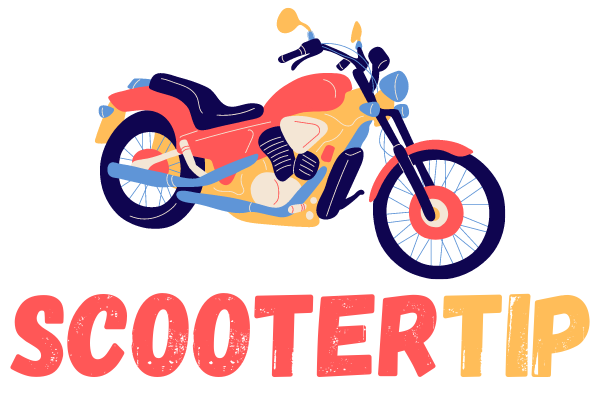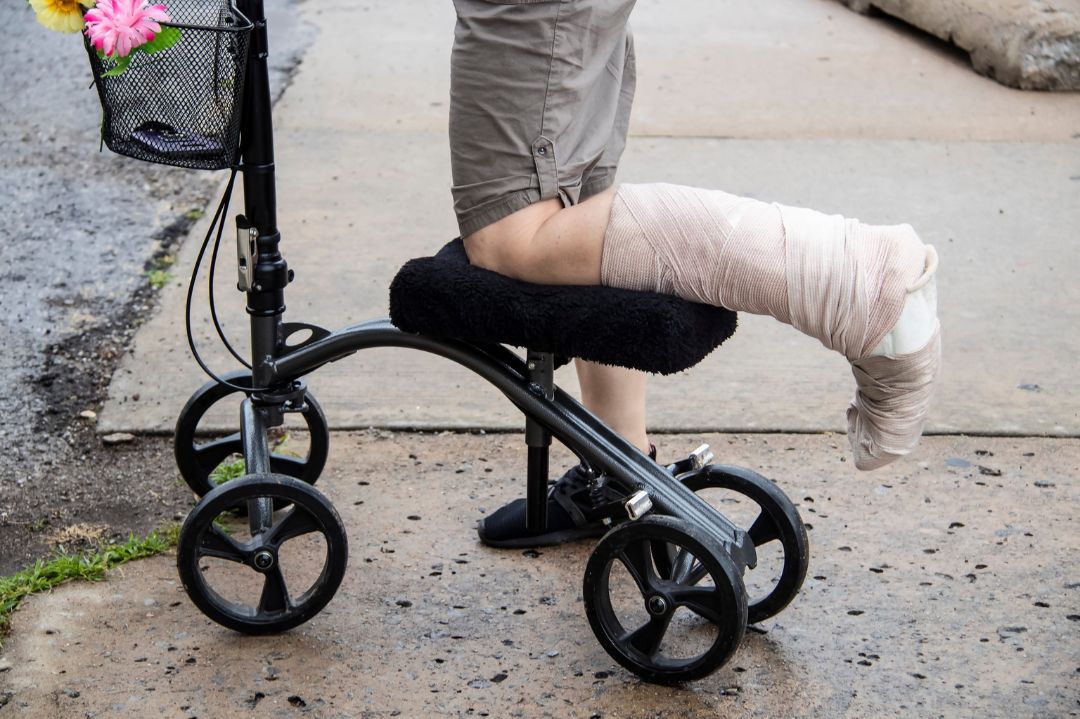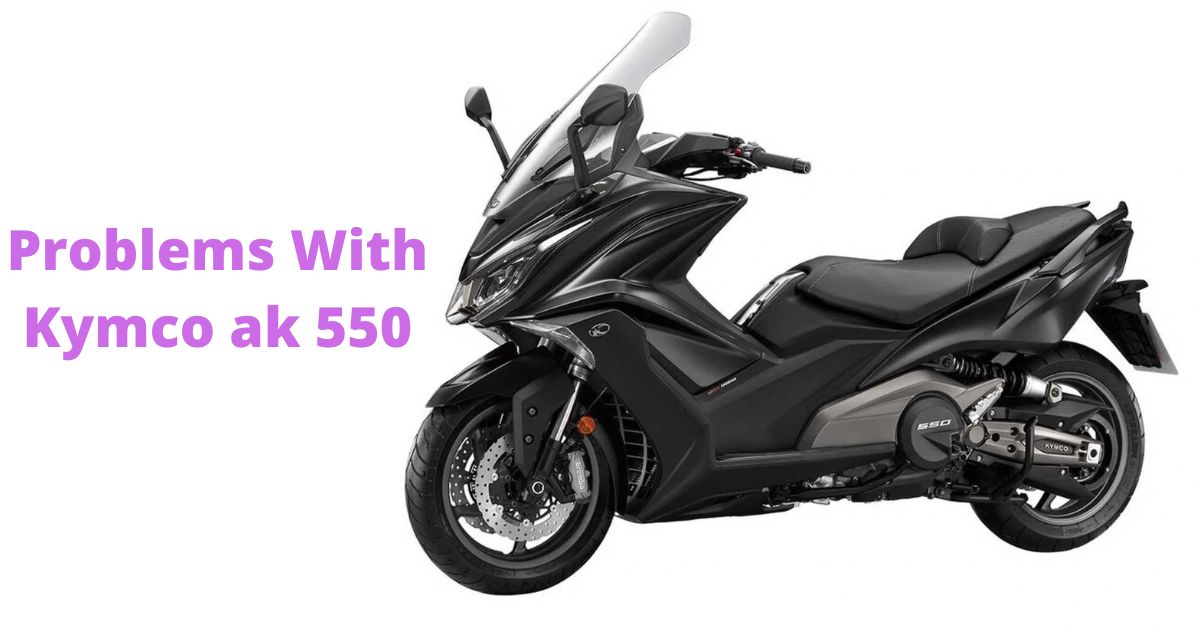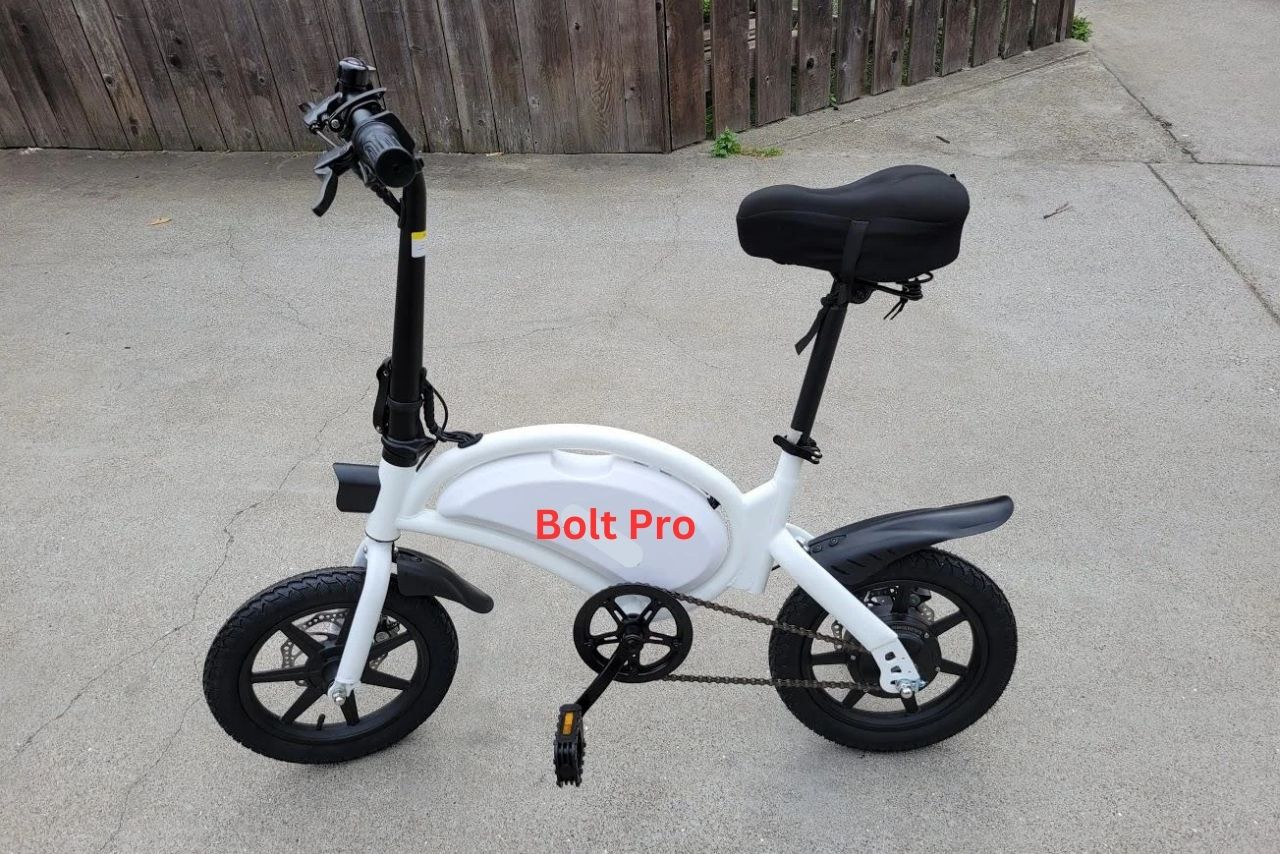Knee scooters have become a popular medical device for individuals recovering from lower leg injuries or surgeries. However, some users have reported discomfort and pain in their knees after using knee scooters for extended periods.
This has led to the question, “Why Knee Scooter Is Killing My Knee?” In this article, we will examine the reasons why knee scooters may be causing harm to your knees and provide tips on how to alleviate the pain and discomfort.
Knee scooters may cause harm to your knees due to prolonged pressure and improper positioning. This can lead to discomfort, pain and even joint damage.
However, there are ways to alleviate the pain, such as adjusting the height and positioning of the knee scooter, using knee pads or cushions, and taking breaks to rest your knees.
Can A Knee Scooter Damage Your Knee?
Yes, a knee scooter can damage your knee if used improperly or for extended periods. Prolonged pressure on the knee joint can lead to discomfort, pain, and even joint damage.
Additionally, improper positioning while using the knee scooter can exacerbate these issues. It’s important to use proper technique when using a knee scooter and to take breaks to rest your knees.
If you’re experiencing persistent pain or discomfort, it’s crucial to consult with a medical professional for guidance on how to alleviate the symptoms and prevent further damage to your knees.
Why Knee Scooter Is Killing My Knee?
If you’re experiencing discomfort or pain in your knee while using a knee scooter, it could be due to prolonged pressure or improper positioning. The pressure from the knee scooter can cause discomfort and pain, and if not addressed, it can lead to joint damage.
Improper positioning can also exacerbate these issues and cause additional strain on your knee joint. It’s important to use proper technique when using a knee scooter and take breaks to rest your knees to avoid further harm.
Additionally, using knee pads or cushions may help alleviate the pain and discomfort.
The Mechanics Of A Knee Scooter
To understand why knee scooters may cause harm to your knees, it’s important to examine their mechanics. Knee scooters require the user to rest their injured leg on a platform while steering with the other foot.
This position places prolonged pressure on the knee joint, which can lead to discomfort and pain. Additionally, if the knee scooter is not adjusted properly, it can cause improper positioning of the leg, exacerbating these issues.
To prevent damage to your knees, make sure your knee scooter is adjusted correctly and take breaks to rest your knees regularly.
The Risks Of Using A Knee Scooter
While knee scooters offer convenience and mobility during recovery, they also come with risks. Prolonged use can lead to discomfort, pain, and joint damage in the knee.
With proper care and attention, you can safely utilize a knee scooter as a tool for recovery without harming your knees.
Potential For Knee Strain And Sprain
In addition to discomfort and joint damage, prolonged use of a knee scooter can increase the potential for knee strain and sprain.
This is due to the repetitive motion required to move the scooter forward, which can put a strain on the muscles and tendons in your knee.
To minimize the risk of injury, make sure to take breaks and move your knee joint regularly while using your knee scooter. Stretching before and after use can also help prevent muscle strain.
Remember, proper technique and care are essential for safe use of a knee scooter during recovery.
Increased Risk Of Knee Cartilage Damage
Prolonged use of a knee scooter can also increase the risk of knee cartilage damage. This is because the constant pressure on the joint can cause wear and tear on the cartilage, leading to pain and discomfort.
To minimize this risk, it’s crucial to use proper technique when using a knee scooter and take breaks to rest your knees regularly.
Note: It’s also important to consult with a medical professional if you experience persistent pain or discomfort while using a knee scooter.
The Impact On The Other Leg And Foot
In addition to potential harm to the injured knee, prolonged use of a knee scooter can also affect the other leg and foot.
The constant pressure and repetitive motion required to move the scooter forward can cause strain on the muscles and tendons in the unaffected leg and foot as well.
This can lead to discomfort, pain, and even injury if not addressed.
To prevent this, make sure to take breaks and alternate legs while using your knee scooter. Stretching before and after use can also help minimize strain on the unaffected leg and foot.
Knee Bursitis from Knee Scooter
Another potential issue that can arise from using a knee scooter is knee bursitis. Bursae are small fluid-filled sacs that cushion your joints and reduce friction between bones and soft tissues.
However, if these sacs become inflamed, they can cause pain and discomfort. Prolonged use of a knee scooter can increase the risk of developing knee bursitis due to the constant pressure on the joint.
To prevent this, make sure your knee scooter is adjusted properly and take breaks to rest your knees regularly.
Knee Scooter Blood Clot
Another potential risk associated with using a knee scooter is the development of blood clots in the legs. This can occur due to prolonged sitting or immobility, which can increase the risk of deep vein thrombosis (DVT).
DVT is a serious condition that occurs when blood clots form in the veins, blocking blood flow and potentially leading to life-threatening complications such as pulmonary embolism.
By being aware of the risks and taking preventative measures, you can safely use a knee scooter during your recovery without putting yourself at risk for blood clots or other complications.
Alternatives To A Knee Scooter
Here are 5 alternatives to a knee scooter:
- 1. Crutches – although they may require more upper body strength, crutches provide a low-impact way to move around while keeping weight off of the injured foot or leg.
- 2. Wheelchair – a wheelchair is a great option for those who need more stability and support as they recover from a leg or foot injury.
- 3. Walker – a walker provides a sturdy base for walking and can be used to take some weight off of the injured foot or leg.
- 4. Hands-free crutch – a hands-free crutch, such as the iWALK2.0, allows for more mobility and freedom while keeping weight off of the injured foot or leg.
- 5. Scooter – a mobility scooter can be a great option for those who need to travel longer distances while recovering from a leg or foot injury.
How To Make Your Knee Scooter More Comfortable?
There are steps you can take to make it more comfortable. First, ensure the knee pad is at the correct height for your leg and that your knee is properly aligned with the center of the pad.
Adding a cushion or gel pad to the knee rest can also help reduce pressure on your knee. Adjusting the handlebars to a comfortable height and angle can also improve overall comfort and balance.
Finally, consider wearing supportive shoes or sneakers while using your knee scooter to help absorb shock and provide extra support. Here are sim[le steps to make your knee scooter more comfortable:
- Choose The Proper Mode
- Use Proper Riding Posture
- Set Proper Knee Rest Orientation
- Adjust The Knee Rest To The Proper Height
- Adjust The Handlebar To The Proper Height.
- Use A Knee Pad Cover
With these adjustments, you can hopefully alleviate any discomfort and use your knee scooter safely during recovery.
What Are Knee Scooter Problems?
Here are the most common Knee Scooter Problems.
- 1. Tipping over – Knee scooters have a narrow base, making them prone to tipping over on uneven surfaces or sudden turns.
- 2. Strain on the arms – As knee scooters require the user to constantly support their weight with their arms, it can lead to strain and discomfort in the upper body.
- 3. Limited mobility – While knee scooters are great for indoor use, they can be difficult to maneuver on outdoor terrain, limiting mobility for the user.
- 4. Storage and transportation – Knee scooters can be bulky and difficult to store or transport, especially for those with limited space.
- 5. Cost – Knee scooters can be expensive, especially if insurance doesn’t cover the cost. This can make them inaccessible for some individuals who need them.
How Do I Stop My Knee From Hurting On My Knee Scooter?
Sure, Firstly, ensure that your knee is positioned correctly on the scooter’s cushion. Your knee should be bent at a comfortable angle and not extended or flexed too much.
Secondly, check the height of the handlebars. They should be at a comfortable height, allowing you to maintain a straight back and avoid leaning forward.
Thirdly, make sure that you’re not putting too much weight on your injured leg while using the knee scooter. Distribute your weight evenly between both legs and use your good leg to push off and propel yourself forward.
Finally, consider using a knee pad or cushion to provide additional support and reduce pressure on your knee. By following these steps, you can lessen the strain on your knee and make your recovery process more comfortable.
Summary: Why Knee Scooter Is Killing My Knee?
Knee scooters can be a great tool for those recovering from leg or foot injuries. However, it’s important to be aware of the potential risks and take preventative measures, such as taking breaks and staying hydrated.
If you’re experiencing discomfort or pain while using your knee scooter, there are steps you can take to make it more comfortable, such as adjusting the knee pad and handlebars and wearing supportive shoes.
Additionally, there are alternative mobility aids available if a knee scooter isn’t the right fit for you.
By being mindful of your body’s needs and taking proper precautions, you can safely use a knee scooter to aid in your recovery without causing further harm or injury.
FAQ
Why Does My Knee Hurt when I Use a Knee Scooter?
If your knee hurts while using a knee scooter, it’s possible that the knee pad is not positioned correctly or the handlebars are too low, causing you to lean forward and put too much pressure on your knee.
Can Using a Knee Scooter Cause Knee Pain?
Yes, using a knee scooter can cause knee pain if the knee pad is not positioned correctly or if too much weight is put on the injured knee while using the scooter.
Why Does My Knee Feel Worse After Using a Knee Scooter?
If your knee feels worse after using a knee scooter, it’s possible that you’re putting too much weight on your injured knee or that the knee pad is not providing enough support or cushioning.
Is It Normal for My Knee to Be Sore After Using a Knee Scooter?
Some soreness may be normal while using a knee scooter, but if it’s persistent or increasing in intensity, it’s important to address the issue and make sure you’re using the scooter correctly.
Can a Knee Scooter Cause Long-Term Damage to My Knee?
While a knee scooter can cause discomfort and pain in the short term, it’s unlikely to cause long-term damage if used correctly and in moderation.
However, it’s important to consult with a healthcare professional if you’re experiencing persistent pain or discomfort while using a knee scooter.




